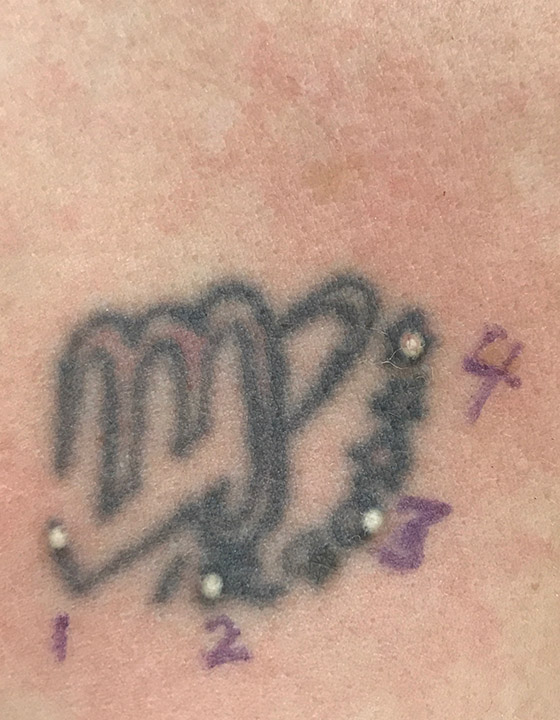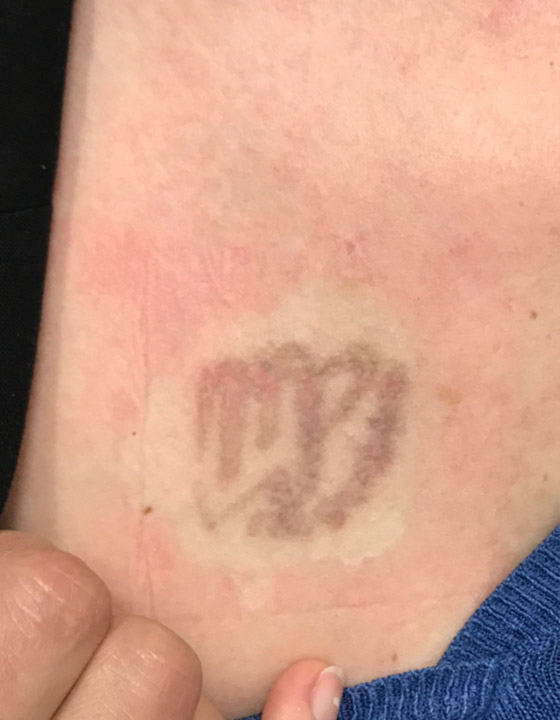Laser Tattoo Removal
Previously thought of as permanent, the evolution of laser technology over the decades has made tattoo removal a reality. In this context, laser light is used photomechanically to fracture ink pigment, which is subsequently removed by the body’s lymphatic system. This was previously done with nanosecond pulse width lasers requiring many sessions. However, more recent picosecond devices with higher peak powers have significantly reduced total session number requirements. Here at MSSC we employ the latest picosecond technology to remove tattoos with a minimum of sessions required.
Pre procedure consultation is required to assess medical suitability, provide costings (larger tattoo= more cost) and determine expectations and likely outcomes. In most cases, a subsequent appointment is made, prior to which local anaesthetic cream may be applied to the area being treated to minimise discomfort. Following this, eye protection is worn and the laser is applied to the skin by a medical doctor. An immediate “frosting ” reaction is seen in most cases, as the absorption of the laser energy leads to subepidermal gas expansion. This is followed by redness, heat and swelling. There may also be pinpoint petechiae and light scabbing. This all resolves within a week to two weeks, following which the tattoo gradually fades. Sun protection is a must during this time. We recommend 6 to 8 weeks between sessions to ensure maximal benefit per session and all sessions are preceded by photo documentation. Two to three sessions are required to significantly fade the tattoo in preparation for an easier cover job. For complete removal 6+ sessions are required. Furthermore, coloured ink (greens, purples, yellows etc..) respond very poorly. Coloured tattoos absorb visible coloured wavelengths, but are deposited in the dermis of the skin where only longer, invisible infrared wavelengths can reach.
Pain, swelling, bruising and scabbing are common temporary side effects that resolve quickly. As with all light-based technologies, post inflammatory hyperpigmentation (PIH) and hypopigmentation may also occur. Post inflammatory hyperpigmentation may be actively treated with topical therapies but also resolves over months. Hypopigmentation may persist indefinitely.
Treatments start from $240 for one session, though larger tattoos will incur a greater fee. This is a long-term treatment plan requiring multiple sessions 6 weeks apart. A pre-procedure consultation is required for an estimate of costs and the likely session numbers needed to achieve objectives.
Before and After Examples multiple sessions
Before

After

Before

After
